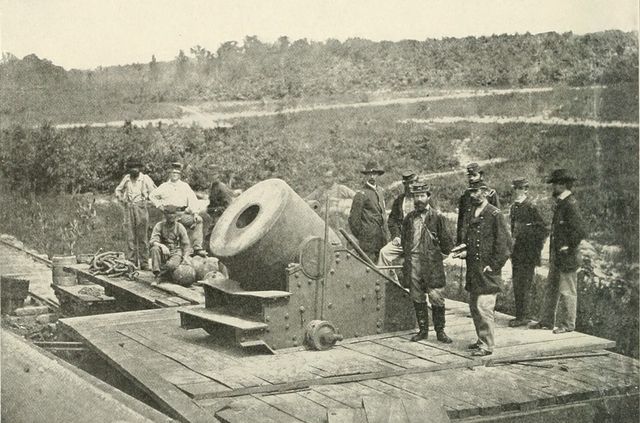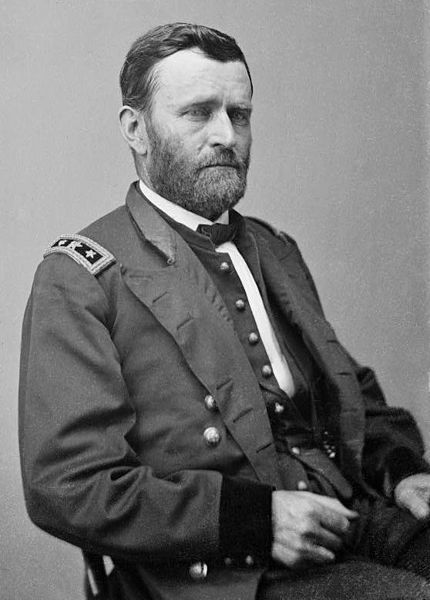The Battle of the Crater took place during the American Civil War, part of the Siege of Petersburg. It occurred on Saturday, July 30, 1864, between the Confederate Army of Northern Virginia, commanded by General Robert E. Lee, and the Union Army of the Potomac, commanded by Major General George G. Meade.
Scene of the explosion July 30th 1864 Alfred R. Waud, artist
Contemporary sketch of Col. Pleasants supervising the placement of powder in the mine
National Park Service marker depicting details of the mine
Sketch of the explosion, as seen from the Union line, by Alfred Waud
The Richmond–Petersburg campaign was a series of battles around Petersburg, Virginia, fought from June 9, 1864, to March 25, 1865, during the American Civil War. Although it is more popularly known as the siege of Petersburg, it was not a classic military siege, in which a city is encircled with fortifications blocking all routes of ingress and egress, nor was it strictly limited to actions against Petersburg. The campaign consisted of nine months of trench warfare in which Union forces commanded by Lt. Gen. Ulysses S. Grant assaulted Petersburg unsuccessfully and then constructed trench lines that eventually extended over 30 miles (48 km) from the eastern outskirts of Richmond, Virginia, to around the eastern and southern outskirts of Petersburg. Petersburg was crucial to the supply of Confederate Gen. Robert E. Lee's army and the Confederate capital of Richmond. Numerous raids were conducted and battles fought in attempts to cut off the Richmond and Petersburg Railroad. Many of these battles caused the lengthening of the trench lines.

The "Dictator" siege mortar at Petersburg. In the foreground, the figure on the right is Brig. Gen. Henry J. Hunt, chief of artillery of the Army of the Potomac.
Fredericksburg, Virginia; May 1863. Soldiers in the trenches.
Lt. Gen. Ulysses S. Grant
Maj. Gen. George G. Meade








